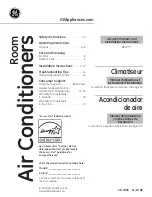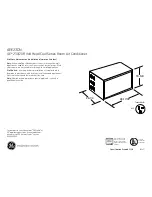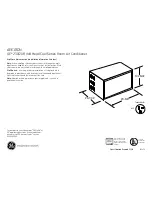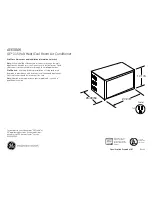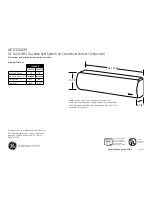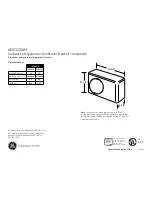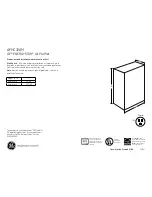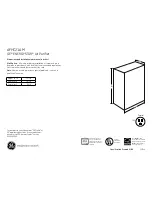
8
M
INI
-S
PACE
EC I
NSTALLATION
, O
PERATION
AND
M
AINTENANCE
M
ANUAL
2.5.4 Condensate
Pump
If an optional fi eld-installed condensate pump is included, it
should be located as near as possible to the air conditioning
system. The pump should be positioned so the inlet hole in
the pump is below the drain pan inside the A/C unit. Secure
the pump in place with a mounting clamp or use an adhesive
that is appropriate for the mounting surface. Ensure the pump
is level for proper operation.
2.5.5 Remote
Temperature/Humidity
Sensor
The remote temperature/humidity (T/H) sensor must be
located so that it will properly sense the temperature/humidity
conditions to be controlled. The T/H sensor should not be
mounted near a doorway or an area where it would be exposed
to direct sunlight. When locating the sensor, consider the
length of wire to be used. As an option, a 75 foot or 150 foot
long cable may be provided by STULZ. Follow the steps below
to mount the sensor.
1. Remove the cover from the base of the sensor by squeez-
ing it at the top and bottom.
CAUTION
The sensor can be damaged if handled improperly.
Take care to not touch the sensor as this may affect
its accuracy.
2. Place the base temporarily against the mounting surface.
3. Level the base. Mark and drill mounting holes through at
least two of the available slotted holes.
4. Run a three-conductor shielded cable through the
opening in the base, then secure the base with screws
ensuring the word TOP on the PC board is oriented
upward.
5. Make the wiring connections. Refer to section 2.8.3.2
on page 14 and the wiring diagram supplied with your
unit.
6. Seal the hole in the wall behind the sensor.
7. Replace the cover plate on the base.
2.5.6
Remote
Water
Detector
The remote water detector is normally placed on the sub fl oor
or in a fi eld-supplied auxiliary drain pan located beneath the
unit. STULZ provides two types of water detectors, installed
as described below.
Spot-type water detector
Remove the protective cover and connect two control wires
to the terminals on the base (terminal lugs are provided). Place
the water detector(s) on the fl oor with the metal electrodes
facing down.
The base is provided with a
mounting hole in the center
which may be used to secure
the water detector in place.
Replace the cover. When water
is present, current will flow
between the electrodes.
NOTE
Do not place the spot-type water detector on an
electrically conductive surface.
Cable type water detector
Lay the cable water detector fl at across the sub fl oor where
water could collect. When water is present, current will fl ow
between the two wires.
A two conductor wire harness is provided with a quick
connect fitting on the end.
The harness mates to the
fi tting on the water detector
and connects it to the control
board inside the electric box.
2.6
Air Distribution Connection
If ductwork is to be installed always consult your local or state
codes. The duct system should be designed to allow the air
to move with as little resistance as possible.
2.6.1 Downfl ow Confi guration Air Patterns
(CCD/CCF)
In a downfl ow unit the conditioned supply air discharge is
through the bottom of the unit into a raised fl oor or through
the front door into the conditioned space. There are two basic
return air patterns: top free return and top ducted return (see
Figure 5).
2.6.2 Upfl ow Confi guration Air Patterns
(CCU/CCR)
In an upfl ow unit the conditioned supply air has two methods
of discharge from the top of the unit: Ducted or through a 2
or 3-way grilled plenum box. There are two basic return air
patterns: Front free return or rear ducted return (see Figure 6).
Units with a rear ducted return are provided with a duct fl ange
for connection of the ducting (refer to the installation drawing
provided with the unit). The connection of the duct to the unit
may be made with either pop rivets or self-tapping screws.































